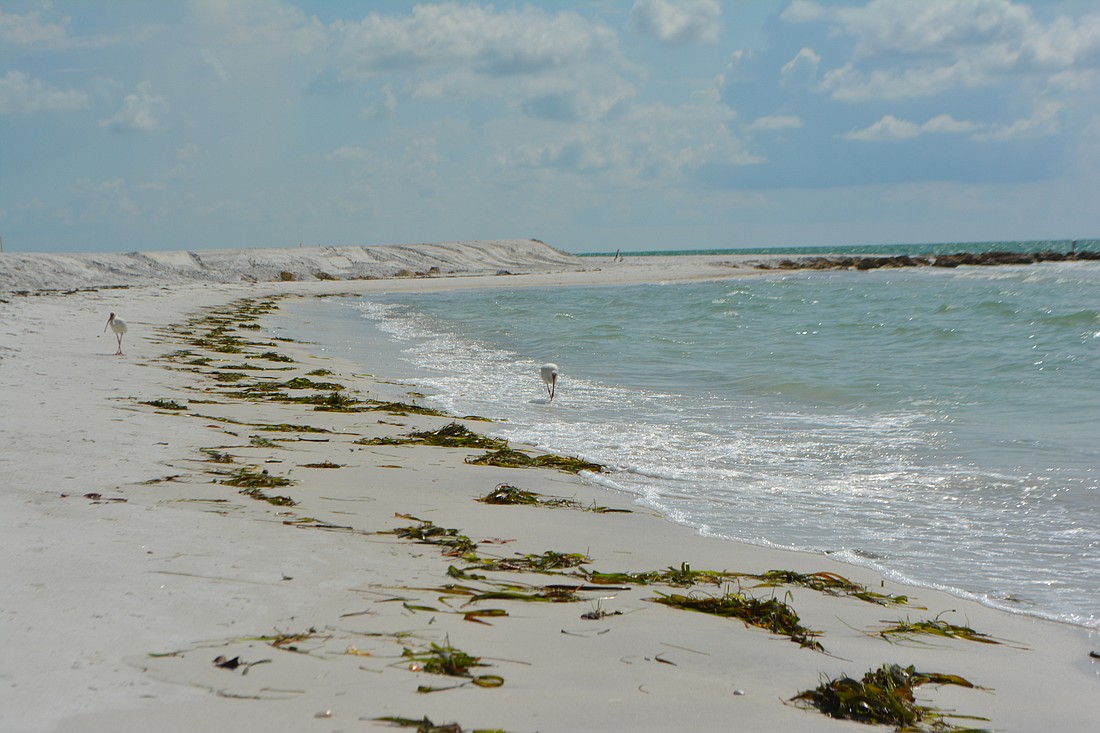- December 4, 2025
-
-
Loading

Loading

No-swim advisories have popped up at several Sarasota and Manatee county locations this summer, strongly advising beachgoers to stay out of the water while stopping short of actually closing the shorelines.
Typically prompted by routine weekly tests that yield results of higher-than-acceptable concentrations of enterococcus bacteria, the advisories are often rescinded days later after follow-up testing shows levels had returned to normal.
The stakes are high when no-swim advisories are posted, and they are not posted lightly, health officials say, adding the out-of-bounds levels of the bacteria can be indicative of several conditions ranging from routine to serious. Health officials also stress that concentrations of enterococcus bacteria are not related to red-tide outbreaks.
Still, the microscopic organisms can lead to health problems.
“When these bacteria are found at high levels in recreational waters, there is a risk that some people may become ill,” Sarasota County Health and Human Services spokesperson Steve Huard wrote in an email.
Enterococcus occurs naturally in the intestine but can cause inflammation and infection if introduced elsewhere in the body.
Elderly individuals, children and immunocompromised individuals are more susceptible to becoming ill, if exposed to water with high bacteria counts through swallowing or a wound. If the bacteria gets into an open wound, infections and rashes can occur.
While the high levels of bacteria can originate from a number of sources, the true source of the bacteria is hard to determine as that level of testing is extensive and costly, Executive Director of the Sarasota Bay Estuary Program Dave Tomasko said.
“The source does matter,” he said. “It’s so expensive to do the source assessment that they rightfully use the bacteria as an indicator.”
The advisories, which have not been lasting for longer than a couple of days, are only rescinded after the bacteria levels are back to acceptable levels for swimming.
“If it’s coming from decomposing seaweed and the tide carries that seaweed away, then the source of that bacteria will not be there anymore,” Tomasko said of a potential way the levels can return to normal naturally.
Higher bacteria measurements can also be indicative of other problems although none are known to have drastic effects on the ocean itself.
“If I mow my lawn and I am blowing my grass clippings out into the bay or a place close to the ocean, the bacteria that decompose the grass clippings aren’t poisonous, but they are going to be indicative of an organic material that does not belong there,” he said.
When the bacteria breaks down the organic material, it uses up oxygen and increases biological oxygen demand. The oxygen sag associated with decomposing material can kill fish, rather than the bacteria itself.
“It’s not a good idea to swim in waters with elevated bacteria, no matter where it comes from,” he said. “It is just that we do not know exactly what to do to decrease and prevent them unless we know where they come from.”
The Department of Health Sarasota collects water samples every Monday from each of the 16 beaches in the county. Once the samples are collected, they are sent to a local laboratory for testing. The county usually receives results the next day.
“If they are within standard, we post the results online and resample the following Monday as normal,” Huard wrote. “If the sample does not meet standard, we resample the following morning for confirmatory testing, if those results are not within standard we issue an advisory and resample the following morning. We’ll generally resample and test until the advisory can be lifted.”
The statewide program tests for enterococci, which the United States Environmental Protection Agency has recommended states adopt as a saltwater quality indicator.
“According to studies conducted by the EPA, enterococci have a greater correlation with swimming-associated gastrointestinal illness in both marine and fresh waters than other bacterial indicator organisms and are less likely to ‘die off’ in saltwater,” Huard wrote. “If an enterococci results were observed to exceed 70 colony-forming units per 100 milliliters of beach water sampled and a resampling result also exceeds this value, then an ‘advisory’ would be issued for the sampling site.”
Posted signs advising the public are typically posted on the affected beaches.
The health department continually reminds beach-goers in their announcements that the higher bacteria levels detected are not due to sewage spills.
Heavy rains days earlier can often sweep up sources of the bacteria in stormwater runoff, leading to elevated levels miles from their original source.
“Enterococci are enteric bacteria that normally inhabit the intestinal tract of humans and animals,” Huard wrote. “The presence of enteric bacteria can be an indication of fecal pollution, which may come from stormwater runoff, pets and wildlife, and human sewage. If they are present in high concentrations in recreational waters and are ingested while swimming or enter the skin through a cut or sore, they may cause human disease, infections or rashes.”
On July 28, health officials posted the first no-swim advisories of the summer season in Sarasota and Bradenton.
Since the first round of advisories have been placed, the following beaches have been reported to have high-than-acceptable levels of enterococcus bacteria:
No Longboat Key beaches have been affected, though several to the north in Manatee County have.
While the advisories do not prohibit entering the water, it is strongly discouraged. Individuals will likely not experience infection if standing in the water, but when an advisory is in place, submerging your body or head in the water will increase the likelihood of infection.
The most common illnesses that occur from being exposed to the bacteria are ear infections, cold-like symptoms, rashes and infections of open wounds and intestinal issues.
In order to close the beach down entirely, Tomasko said it is likely that strong evidence of high levels of bacteria, particularly from sewage, would need to be present.